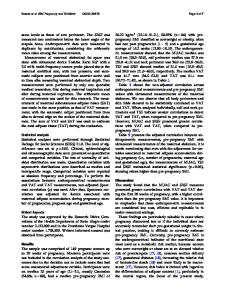Photovoltaics characterization: A survey of diagnostic measurements
- PDF / 1,072,841 Bytes
- 25 Pages / 612 x 792 pts (letter) Page_size
- 88 Downloads / 335 Views
MATERIALS RESEARCH
Welcome
Comments
Help
Photovoltaics characterization: A survey of diagnostic measurements Lawrence L. Kazmerski Center for Measurements and Characterization, National Renewable Energy Laboratory, Golden, Colorado 80401 (Received 2 March 1998; accepted 2 March 1998)
The advancement of the photovoltaic technology is closely linked to the standard evaluation of the product, the diagnosis of problems, the validation of materials and cell properties, and the engineering and documentation of the ensemble of device properties from internal interfaces through power outputs. The focus of this paper is on some of the more common, visible, and important techniques dealing with physical-chemical through electro-optical parameters, which are linked intimately to the performance quality of materials and devices. Two areas, defined by their spatial-resolution qualities, are emphasized: macroscale and microscale measurement technologies. The importance, strengths, and limitations of these techniques are stressed, especially their significance to photovoltaics. Included are several techniques that have been developed specifically to address problems and requirements for photovoltaics. The regime of measurement literally covers arrays through atoms.
I. INTRODUCTION
Characterization has been essential to the advancement and realization of photovoltaics. We sometimes compartmentalize ourselves into special technical interests and can mistakenly associate a particular materials system, a particular discipline, or a particular approach as the whole of photovoltaics. The technology owes its scientific development to an ensemble of creative contributions from its parts—covering thought, planning, realization, evaluation, and verification. Theory, materials science, processing, device development, modeling, testing, and measurement are codependent. None of these areas can stand alone; together, they provide for the successes and future of the technology. This paper highlights the evaluation and verification aspects of photovoltaics, with the objective of surveying the breadth of the characterization techniques. This examination includes some historical perspectives, an overview of the present, and a look to the future. This treatment focuses on the cell (“the basic photovoltaic device which generates electricity when exposed to sunlight”1 ) and module [“the smallest complete, environmentally protected assembly of PV cells [flat platetype], or receiver(s) and optics (concentrator-type), and related components, such as interconnects and mounting, that accepts unconcentrated sunlight”2 ]. These terms are clarified in Fig. 1, which represents the hierarchy of photovoltaic components.1–8 A compilation of characterization techniques that routinely support photovoltaic materials, device, and component evaluations are included in Table I. All aspects and the entirety of measurements of even this selected set cannot be adequately addressed because of 2684
http://journals.cambridge.org
J. Mater. Res., Vol. 13, No. 10, Oct
Data Loading...











